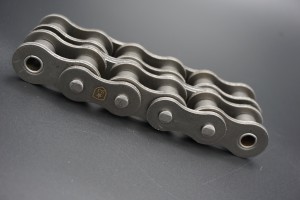Roller chains are an essential component in many mechanical systems, from bicycles to industrial machinery. Knowing how to size roller chain for a specific application is critical to ensuring optimum performance and service life. In this blog post, we’ll explore the key considerations needed to accurately size your roller chain.
Learn about roller chain names:
Before we delve into the methods of sizing roller chains, let’s familiarize ourselves with the typical roller chain designations. Roller chains are usually identified by a set of numbers and letters following a specific format, such as 40, 50 or 60.
The first number indicates the pitch, which refers to the distance between the centers of each pin. The second number indicates the roller width or chain width in eighths of an inch. For example, a 40 chain has a pitch of 0.50 inches and a 50 chain has a pitch of 0.625 inches.
Determine roller chain size:
Now that we understand the basics of roller chain designations, let’s move on to determining the correct size.
1. Calculate pitch:
Start by counting the number of roller pitches in the chain, excluding half links. The pitch consists of inner links, outer links and the rollers connecting them. If the pitch is odd, the chain may have half links, which should be counted as half pitch.
2. Measure distance:
After determining the pitch number, measure the distance between the centers of two adjacent pins. This measurement represents the pitch and should match the name of the chain. For example, #40 chain has a pitch of 0.50 inches.
3. Determine the width:
To determine the width of your chain, use a precision caliper to measure the distance between the inner plates or the roller width. Remember that widths are measured in one-eighths of an inch, so a measurement of 6/8″ means the roller is 3/4″ wide.
4. Check the professional designation:
Some roller chains may have other designations, such as single chain (SS) or double chain (DS), to indicate whether they are designed for single or multiple chains, respectively. Make sure to identify any special characteristics that may affect the chain’s performance.
Consult the Roller Chain Reference Table:
While the above steps are usually sufficient for most roller chain sizes, occasionally, a roller chain may have a unique design or an unconventional size. In such cases, it is advisable to consult the Roller Chain Reference Table, which provides an exhaustive list of chain names, sizes and related specifications.
By referring to these tables, you can cross check your measurements and ensure you are sizing the correct roller chain for your specific application.
in conclusion:
Properly sizing roller chains is critical to keeping mechanical systems running smoothly and efficiently. By following the steps above and referring to the roller chain reference chart, you can accurately identify the pitch, width and any special designations of the roller chain. Remember that precise measurements and attention to detail are key to ensuring optimal chain performance and longevity. Therefore, take the time to measure and verify the dimensions of your roller chain before making any replacements or modifications.
Post time: Jul-20-2023

